🤓 The 2026 Local Search Ranking Factors are here!! Check out the report!
🤓 The 2026 Local Search Ranking Factors are here!! Check out the report!

If I could turn back time
If I could find a way
I’d take back those local SEO mistakes
And say, “Yay!”
Let my repurposing of a chart-topping 80s anthem serve to illustrate how fantastic it can feel when you catch yourself before you make a mistake. Some mistakes are wrong steps you accidentally take while others are opportunities you’ve overlooked, undermining success. The resultant headaches of either can definitely cause crooning over the wish for a time machine to go back and undo the problem before it began.
Whether you’re new at local search engine optimization or marketing a brand new local business from scratch, a run-through of my list of 16 very common mistakes could save you from having to belt out a very sad ballad of brand woe later on. It could also help you identify a mistake you’re currently struggling with and find a way to rectify it. Let’s make sure your company is one of the happy ones who know how to avoid these major errors:
The market for any location of your local business is made up of two components:
The first is a geographic radius within which Google will show your business to nearby searchers. These potential customers will only see your business as a local or organic result while they are physically located within this radius; once they move outside of it, your business is no longer returned as a result for them.
The second is your direct competitors who are shown within this same customer radius.
If you don’t know your market, you will misunderstand who you are serving and who you are competing against. Getting clear on this point is the foundation of your local search marketing strategy, and while local SEO can help you expand your market, it’s vital to know that there are limitations.
For example, the above screenshot from Google Maps shows Google’s concept of the borders of the town of Mendocino, California. A business outside this perimeter may find it harder to rank for searchers located within the red outline and vice versa.
Drive around town and do your own mobile searches for the phrases that matter most to you to understand both where you show up for potential customers and which competitors are part of your market. Scale this process with a tool like Whitespark’s Local Rank Tracker.
Because of Google’s bias regarding the proximity of searchers to physical business locations, where you set up shop will have a tremendous impact on the ability of your company to rank well for a desired audience. The above screenshot from Google Maps shows a lodgings brand called Heartwood that is located outside the borders of the town of Mendocino, and this is one of the commonest causes of local search ranking difficulties. Without the right address, you will be in a constant uphill battle to be visible in Google’s local packs in competitive markets.
Carefully study your market before you rent, buy, or build so that you understand the ideal location for being visible both offline and online. If a current location has proven to be a major liability and your marketing is failing to overcome Google’s proximity bias, you may need to consider moving.
A poor choice of address is also at the root of a completely different and extremely common local SEO conundrum: being located too close to a direct competitor. If you locate your business within the same building or even within a few blocks of a competitor who shares your same Google Business Profile (GBP) categories, you may find your listing filtered out at the automatic zoom level of Google Maps. If the competitor has succeeded in sending signals to Google that it’s the stronger, more relevant result for searchers, they will be visible at this zoom level while your listing only appears when you zoom in.
This is one of the more difficult nuts to crack, because many types of businesses rely on being centrally located in high-traffic areas. Think of downtown shopping districts or auto rows. The solution is not for a boutique or car dealership to move away from these centers of commerce, but to invest as much as they can in their local SEO and local search marketing so that they become the stronger competitor in Google’s eyes and, thus, avoid being filtered for as many search terms as possible.
This topic is so important that we’ve devoted an entire column to Everything That Can Go Right and Wrong with Your Local Business’ Name. Read it to see the fullest picture of this common problem, but in brief, if you choose the wrong name for your company, it can put you at a competitive disadvantage in your ranking and marketing efforts. Avoid local business names that are:
If you’ve already made a naming mistake, it may be time to consider legally acquiring a DBA and rebranding.
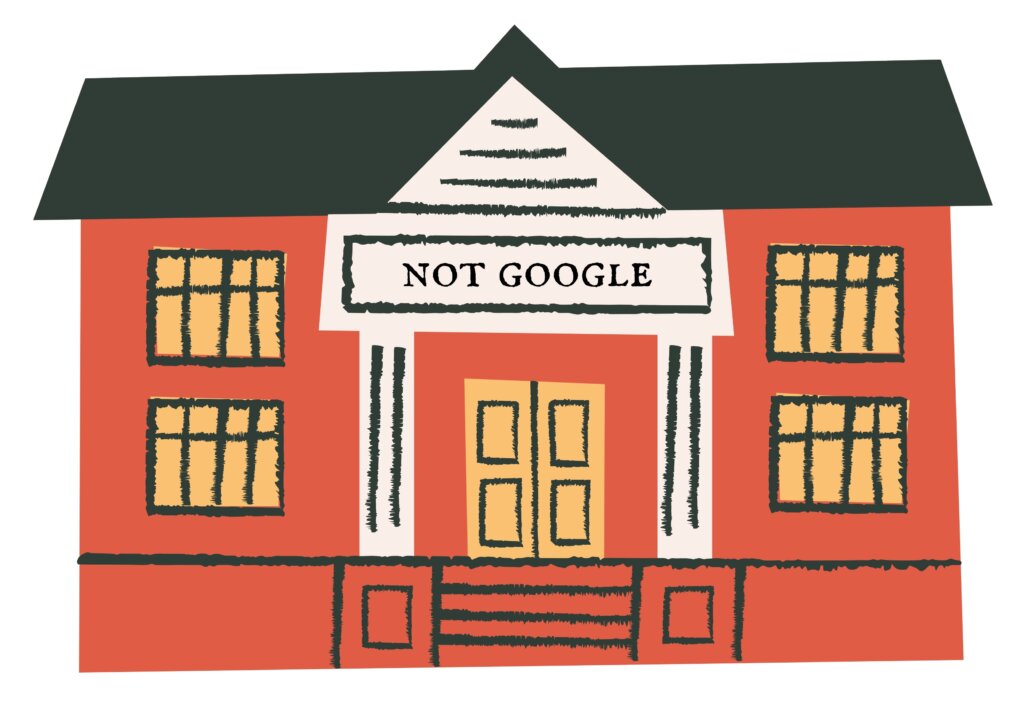
Google has become so ingrained in daily life that it’s easy to mistake it for something like a public service. For example, when you visit a library, the entire experience has been organized for your benefit, from the way librarians offer you one-on-one assistance, to the way books are shelved in alphabetical order, to the civic agreement of letting you take materials home with you, provided you return them. You understand the rules and fines and can quickly get help if any feature of the library is unclear to you. The library is there to serve you – not profit from you.
Google, by contrast, is there to earn money for its shareholders. It makes whatever decisions it feels are necessary to maximize its revenues, and it is not obliged to provide local business owners with an experience that feels fair, helpful, or clear. While, ostensibly, it is in Google’s best interests to engage and support the local business community so that people like you provide plenty of content around which Google can place its paid products, they are under no obligation to serve you.
Because of this dynamic, local business owners commonly come up against aspects of Google’s local search products that lack transparency and feel unfair, confusing, buggy, broken, and frustrating. It can take many years to realize that the content you’ve created for Google (like your GBP) belongs to them – not to you. They can shutter your listings, delete your reviews, penalize your business, rank spammers ahead of you, and offer no explanation for apparent failures on their part.
Google’s monopoly status is problematic. Their visibility means you almost have to play in their ballpark if you want to be fully present online to your community, but, at the same time, there is little urgency on their part to improve long-standing problems with their system because they have no real competition. You’ll save yourself years of angst if you recognize that this brand operates like many large corporations, owns the content you create in their products, and causes lots of difficulties for business owners. All your competitors are in the same boat as your brand when it comes to Google, and you’ll need to focus lots of energy on your GBPs, but should not forget that other marketing opportunities exist beyond them.
You’ll avoid multiple costly mistakes in creating Google Business Profiles if you take 20 minutes to read through the Guidelines for representing your business on Google beforehand. Your goal here is to understand:
Your business model will typically fit one of these categories:
Conversely, the following models are typically ineligible for Google Business Profiles:
By knowing your model as Google sees it, you will see how many listings you are eligible for and which of Google’s guidelines are applicable to how you should fill out your Google Business Profile.
If, however, any of Google’s guidelines indicate that you’re ineligible to list your business, you need to know this, too, so that you don’t waste time on using a system that isn’t meant for you. For example, if you don’t serve customers face-to-face, or are trying to use a P.O. box as your address, you’re not eligible for a GBP. Knowing this, you might choose to make operational changes to become eligible for listings. Otherwise, creating an ineligible listing means it will always be at risk for a variety of penalties and removal.
When creating a GBP, you are allowed to pick a primary category and up to 9 additional categories. Correct categorization will help your listing be visible in Google’s local results for relevant searches, but incorrect categorization can create the following problems:
Our annual Local Search Ranking Factors survey most recently found that miscategorization is the #1 negative ranking factor. Use a free Chrome extension like GMB Everywhere to see all of your competitors’ categories to be sure you’re making good choices with this vital field.
Specific business models need to take care not to share certain details across listings, to avoid confusing Google and the public. Here are some rules of thumb:
In any busy market, you will always be seeking to be competitive, and one tried-and-true approach to this goal is to make a maximum effort with your GBPs, instead of a cursory one. If Google gives you the option to fill out a field or use a feature, always investigate it to see if it’s a good fit for your business, and be sure you can say “yes” to everything on this mini checklist:
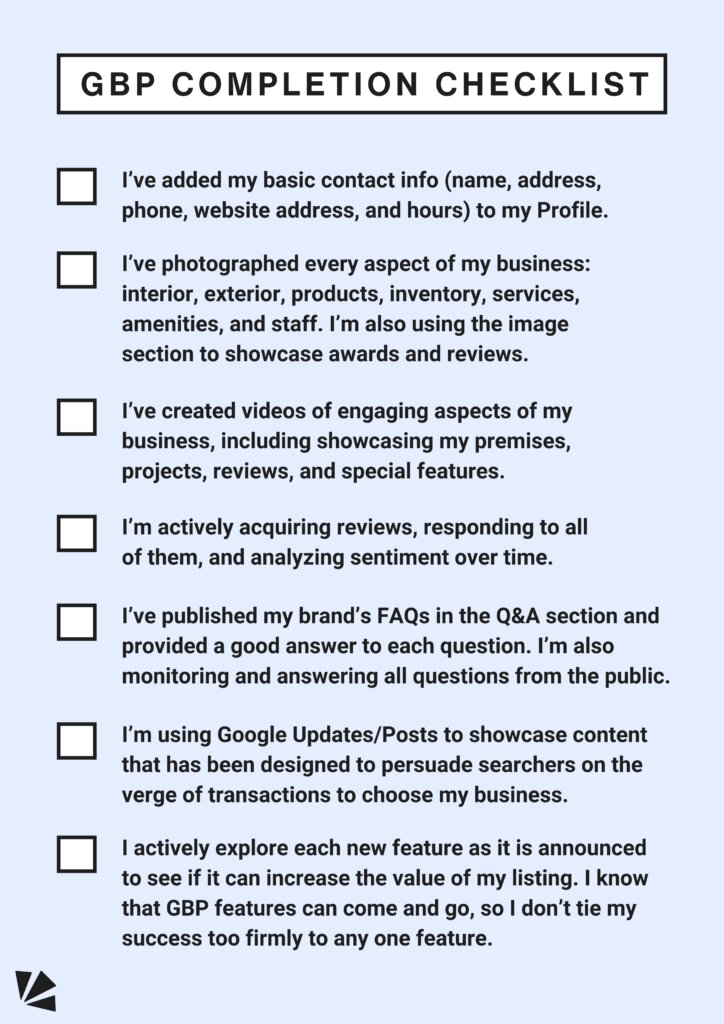
It’s astonishing to me to see that, in 2024, Google’s local business index is still full of minimal-effort listings. Countless brands are leaving an incalculable opportunity on the table to have the most active and engaging profile in town.
Review neglect is, perhaps, both the commonest and costliest local SEO mistake. Reviews are your most persuasive free sales force and a major seat of your online customer service. Neglect of this content can quickly erode your average star rating and put your brand into dangerous territory of not being trusted and chosen by the public. Be sure you can say “yes” to everything on this short checklist:
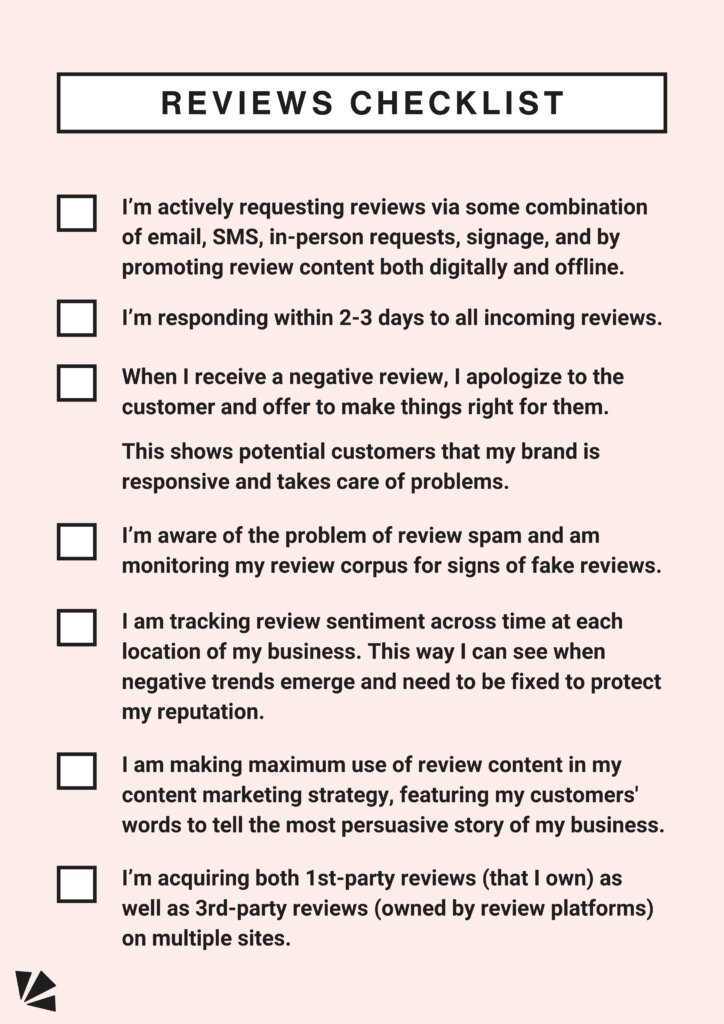
For a complete breakdown of the importance of reviews, read The Importance of Local Business Reviews.
When you make marinara sauce from scratch, you stand at the stove, adding a pinch of salt, a sprinkle of oregano, and then tasting each time to judge the effect of your seasoning. Local rank tracking is exactly like this; if you make a change to your GBP or SEO strategy, or something changes in your market, a local rank tracker allows you to measure the impact. Without the ability to track listing performance over time, you’ll be in the dark as to whether certain efforts on your part are yielding a positive result or whether problems are emerging which are allowing competitors to get ahead of you.
Every local business in a competitive market needs a strategy for tracking and analyzing local SERP visibility. Check out Whitespark’s Local Rank Tracker for more information on this important aspect of doing business effectively online.
Early in my career in local SEO, I audited tons of websites and nearly every publication I reviewed was hampered by this basic misunderstanding: our website is for our business.
While it’s true that your brand’s website should feature a wealth of information about every aspect of your company, it shouldn’t be built for you. Your website is for your potential customers, and every line of text it contains, every photo, every video, every link, every menu, every tool, every feature, and every CTA should speak directly to the visitor.
I think old-school brochures have a lot to answer for when it comes to how businesses are still representing themselves in 2024 on the web. It’s such an easy mistake to fall into, writing about your brand as though you were talking to your team or peers at an all-hands meeting. Thankfully, it’s also an error that’s simple to correct.
Don’t talk to yourself on your website. Turn the entire publication around to directly address your customers and help them take actions. We know from the recent Google leaks that user behavior directly impacts organic rankings, and we also know that organic rankings underpin local pack rankings. You want an engaged audience, and how you speak to them via your website matters.
A core component of speaking directly to your visitors via your website and other digital assets is reflecting their own language in what you write. When combined with active listening at your place of business, keyword research helps you understand how the public searches for what you offer.
You have many free options for a basic product including offerings from Backlinko, SEMrush, Moz, and Google and many paid options for scaling up. Your findings should be reflected in the tags, text, links, and CTAs of your website to ensure that you are speaking your community’s language.
An unoptimized website is a neglected asset that could be doing so much more to impact your brand’s bottom line. In addition to reflecting the findings of your keyword research in your website’s title tags, headers, alt text, links, main body text, meta descriptions and other core components, be sure you can answer “yes” to everything on this checklist that applies to your model:
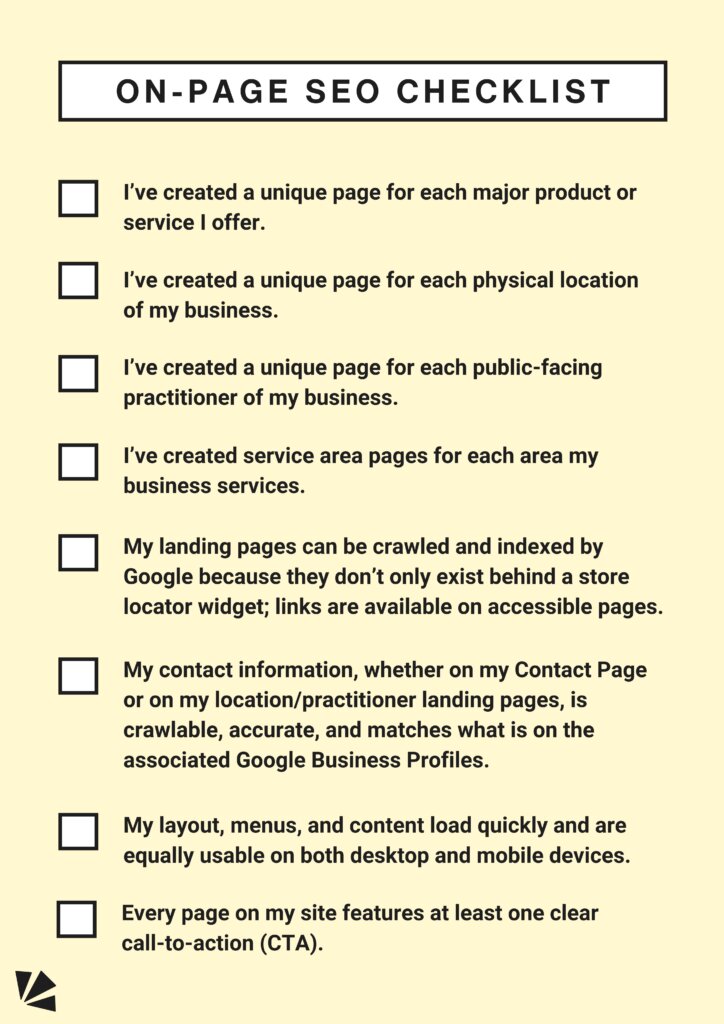
This is a very basic list, but a lot of work goes into checking off the boxes and ensuring that your website has been optimized both for humans and search engine bots.
This is one of the easiest mistakes into which local business owners fall. You are so busy with your day-to-day operations that days, weeks, or even months can go by without giving yourself the time to sit down and look through your own website and do some searches in Google to see how your site is being presented in the SERPs. When this maintenance task is neglected, all of the following serious problems can arise:
Tiny neglected details can quickly add up to both security risks and bad UX. Be sure you have a process in place for regularly touring your own website as if you were a visitor and auditing it for errors both manually and with tools.
Many local businesses have yet to make the leap of understanding that the online experience customers have with your brand must be given as much attention in your customer service strategy as the interactions that take place within the four walls of your premises. Neglect of online customer service will erode your reputation, rankings, and revenue. Every business and community is unique, but at a minimum, your online customer service strategy should include the following:
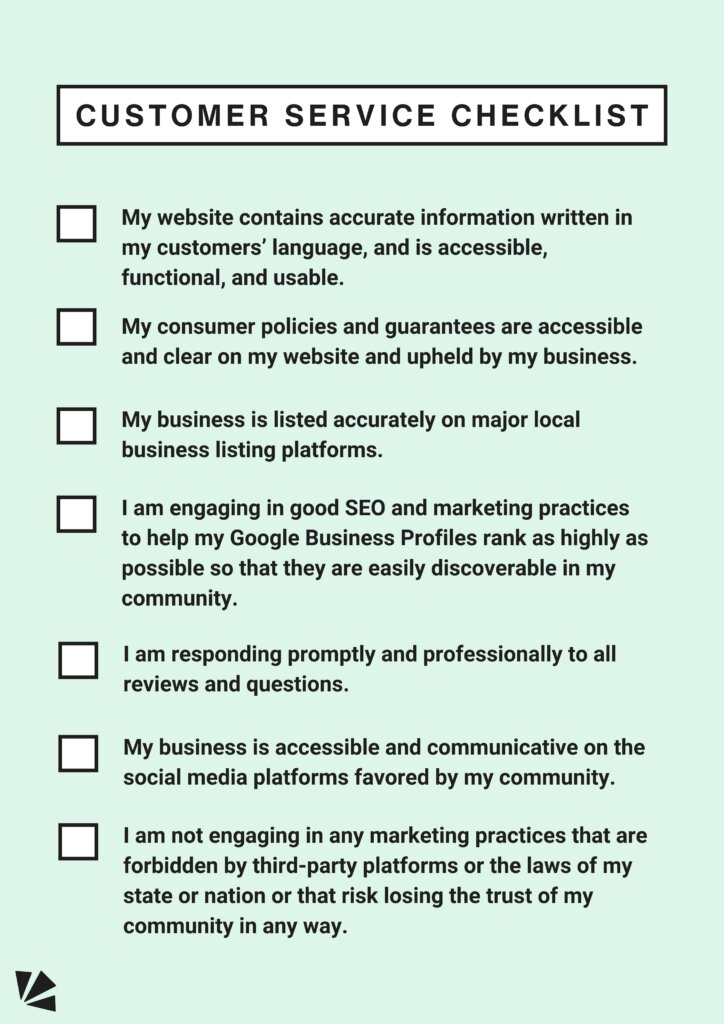
Platforms like Google are constantly rolling out new fields, features, and opportunities for local businesses to market themselves. It may be too much for a busy local business owner to keep up with on a daily basis, but a system should be put in place for a monthly or quarterly review of any major developments. Neglect of this practice can lead to your competitors gaining an edge because they have latched onto a new asset that you have overlooked.
A practical solution to maintaining awareness is to sign up for a few local SEO newsletters that will help you keep current at a pace that works for your business. We recommend:
You may find others you highly value, and even if you don’t have time to devote to a daily scan of social media for local search developments, publications like these will be sitting in your inbox for whenever you’re ready to book time for reading. Be on the lookout for debut opportunities that are a perfect fit for your business and customers.
Was there ever a truer axiom than that everybody makes mistakes? I doubt it, because I’ve made so many of my own, and have consulted with so many local business owners whose small missteps have led to big problems. Hopefully, my list of 16 common local SEO errors has helped you avoid needless trouble, and by sharing this piece with your team, you can all spend more time focusing on the fun and creative side of marketing instead of getting mired in messes. And, I hope it’s encouraging to realize that most mistakes are fixable with a judicious, concerted effort.
Feeling beset by problems with your local search marketing strategy? Whitespark can help, and we’re just a phone call away!
Miriam Ellis is a local SEO columnist and consultant. She has been cited as one of the top five most prolific women writers in the SEO industry. Miriam is also an award-winning fine artist and her work can be seen at MiriamEllis.com.


Whitespark provides powerful software and expert services to help businesses and agencies drive more leads through local search.
Founded in 2005 in Edmonton, Alberta, Canada, we initially offered web design and SEO services to local businesses. While we still work closely with many clients locally, we have successfully grown over the past 20 years to support over 100,000 enterprises, agencies, and small businesses globally with our cutting-edge software and services.